
JANE BURN – POETRY AS HARD GRAFT, INSPIRATION, REACTION OR EXPERIMENT?
I interviewed poet & artist Jane Burn who won the Michael Marks Environmental Poet of the Year 2023-24 with A Thousand Miles from the Sea.
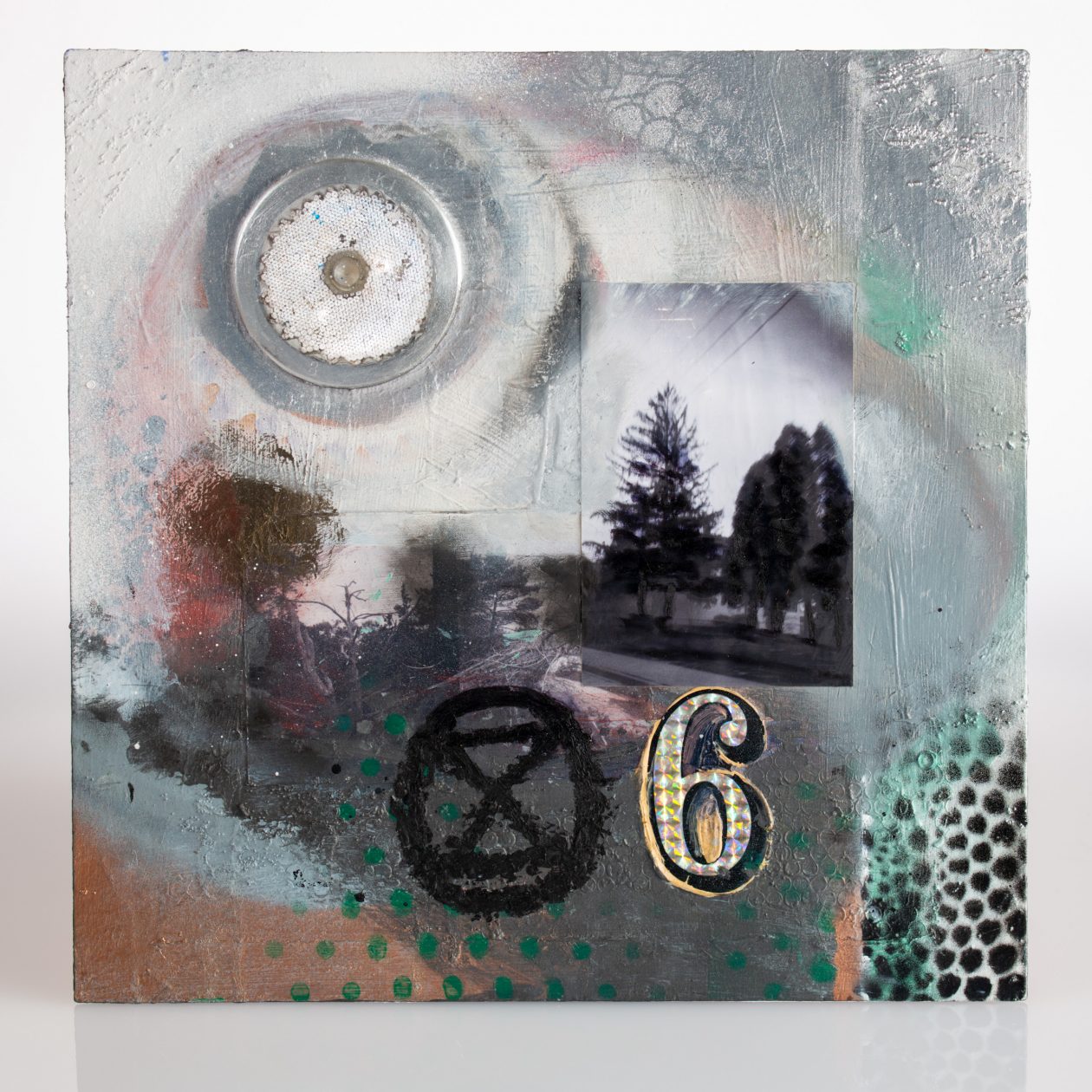
I interviewed artist Carla Winterbottom, whose visionary work has a deep connection with climate change and extinction.
Leslie: What have been the phases in your approach to art, and what caused those changes?
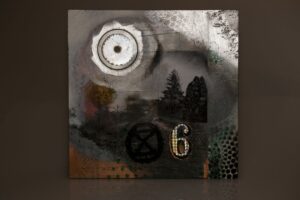
Carla Winterbottom: ‘Refusing the Sixth’Carla: I’ve essentially been making the same images since I was four: the house, the tree, the neighborhood landscape. I explore the sense of mystery in the mundane, those odd moments when light, space or objects seem potent or strange and you feel a dream like reverie, and stop to look longer. Inherent in my work is a sense of nostalgia, increasingly elegiac, that intends to capture/save those moments, those lost elm trees, insects, birds…..
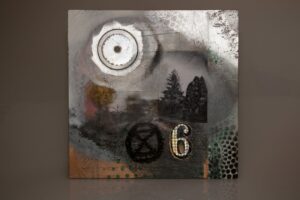 I have shifted from using acrylic paints (to avoid plastics) to more collage techniques, using oils, found objects and my photographs. My notes and snippets of thought sometimes become textual elements in the work, titles for them, or just fuel for further thought.
I have shifted from using acrylic paints (to avoid plastics) to more collage techniques, using oils, found objects and my photographs. My notes and snippets of thought sometimes become textual elements in the work, titles for them, or just fuel for further thought.
This summer I created an outdoor installation called ‘Refusing the Sixth’, referencing the sixth mass extinction caused by humans.
 This was installed at Boundary, an alternate space run by artist Susannah Papish at her residence, (a big trend in Chicago). I planted two apple trees in the yard (the permanent part), a few dead trees with objects, and a had a sound element with recording of insects from my yard, with actress Monica Sanborn narrating my walking meditations on extinction. The response at the opening was great, with people engaging in deep discussion, local activists came, and the evening ended with a fun ‘make your eco- porn name’ game. Eg, Cedar Citronella , Redwood, et cetera. I’m developing more stories for a continuation of the recording series.
This was installed at Boundary, an alternate space run by artist Susannah Papish at her residence, (a big trend in Chicago). I planted two apple trees in the yard (the permanent part), a few dead trees with objects, and a had a sound element with recording of insects from my yard, with actress Monica Sanborn narrating my walking meditations on extinction. The response at the opening was great, with people engaging in deep discussion, local activists came, and the evening ended with a fun ‘make your eco- porn name’ game. Eg, Cedar Citronella , Redwood, et cetera. I’m developing more stories for a continuation of the recording series.
 Leslie: How did your interest in being a professional artist begin, grow and develop?
Leslie: How did your interest in being a professional artist begin, grow and develop?
Carla: From as far back as I recall I’ve identified as an artist, and can remember helping classmates with their drawings in grade school. Other interests, in medicine and science, were thwarted by my poor math skills, although I did enjoy a second career as a massage therapist. I attained art degrees that have led to rich and varied experiences with the arts community, teaching, curating, and helping develop a local arts organization, The Beverly Area Arts Alliance.
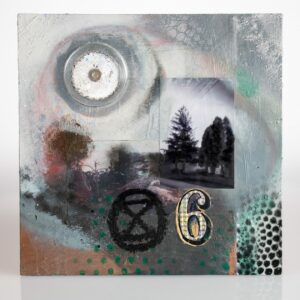
For a number of years I was part of a ‘woman’s crit group’, who met regularly for serious art talk and wine drinking, as well as ‘The Colson’s Truck Group’ an artist family of sorts who enjoyed a year-long exhibition residency in The Bop Shop, a Chicago jazz bar. I’ve maintained a steady studio practice, some years at home, and for the past nine years renting a lovely space in the top floor of an old vaudeville building, The Blue Island Opera House.
Leslie: Can you pick a few representative works from your photos, collages and etchings, please, and explain their importance to you?
Carla: ‘Another Sparkle Day’ is a photocollage with a touch of paint that incorporates two locations, Windsor ( with a tall elm) and Provincetown – but is really about a contemplative and dreamy state of mind. (In the collection of artist Amy Regutti).
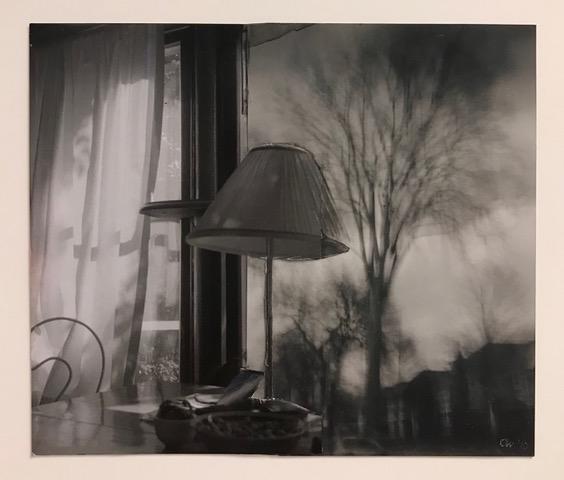
‘Venice Beach’ is a carborundum etching, again depicting two different locations, Venice Beach, California and Provincetown, Massachusetts. It is diaristic, like much of my work, and alludes to the feel of a place, in a sense, a psychological landscape.
‘Without It’, 2014, incorporates mixed media collage with photography, paint, iridescent plastic and text. This one hangs at home in a vintage white frame. It changes with the light, is small scale and I like the intimacy of small works.
‘Lost’, 2019, mixed media on museum board, is part of the ‘Refusing the Sixth’ exhibit at Boundary. I like it because it’s got a strong graphic sense, a vintage feel, is personal but also open to various interpretations.
Leslie: What individual methods do you use to create an artwork?
Carla: I usually do not have a set idea of how my art will look ahead of time, it’s a process of discovery and response to each new mark. I enjoy the surprise inherent in what comes about by this method. I often have many pieces underway at once, sometimes up to twenty. I’ll flit from one to another, setting out on tables with my collections of detritus and ephemera. I arrange my photos on museum board or paper, maybe sew on found feathers or snake skins from my yard, glue things, paint, spray paint, tear off, mask, repaint, add another photo…Some work is finished in a day, some takes years; I spend an hour here and there until the point where I feel there’s a resolution, or the visual impact I like.
I pin the work up, regard it backwards though a mirror (this really helps me see it freshly and recognize where changes are needed, to value, composition….) I work in relatively low light conditions, I find that relaxing, and my work often has iridescent and reflective qualities that change with different light conditions.
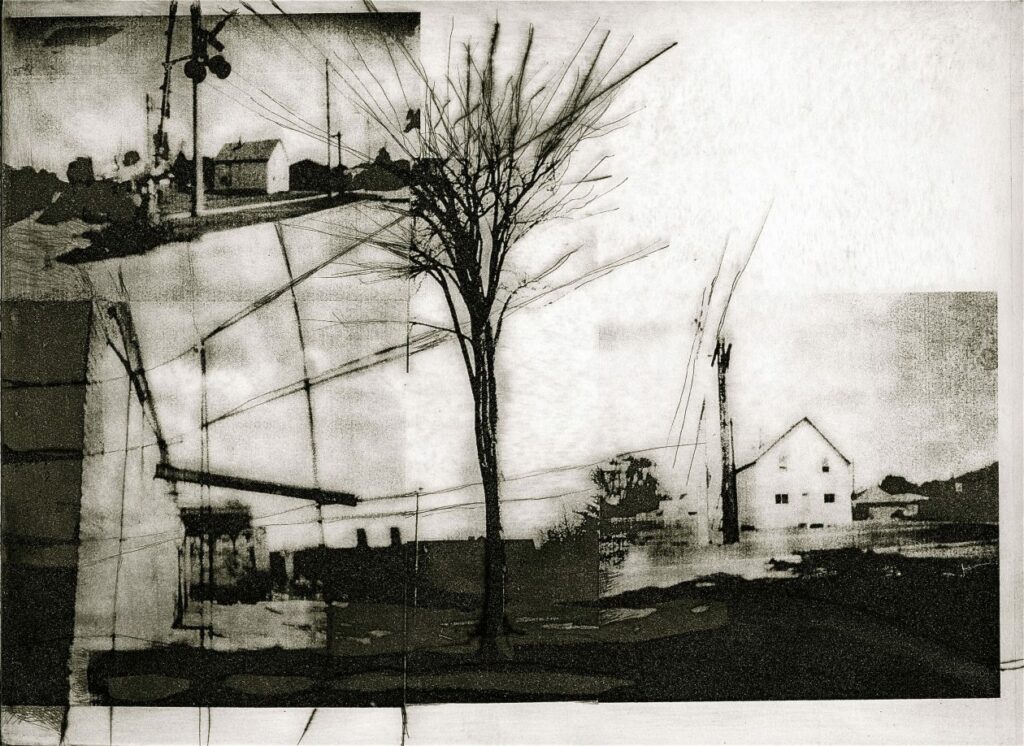
Leslie: Is there a sequence, method or environment that helps you towards your best work?
Carla: Working at my art is a meditation of sorts, (though with music playing) and when I’m in the studio alone I really feel that, getting into the zone. I take photos as things progress and can see that I often ingore early good stopping points, (though sometimes I stop there) and have to work to a new point of resolution. I enjoy that almost as a game, a visual puzzle. Many times the work that has the most awkward path has the most satisfying and unexpected result. Feedback and critical insight from artists I know, studio mates, and friends is very valuable. Seeing my work through their eyes, or words, and also viewing it in new places helps inform my process. Many times I’ve tweaked or completely changed my artwork after exhibiting it. I regularly take workshops, for the discipline, the group energy and to learn new skills. The workshops at the Fine Arts Works Center in Provincetown, Massachusetts have been particularly inspiring, partially due to the great teachers, but also because the town feels to me like I walked into one of my collages.
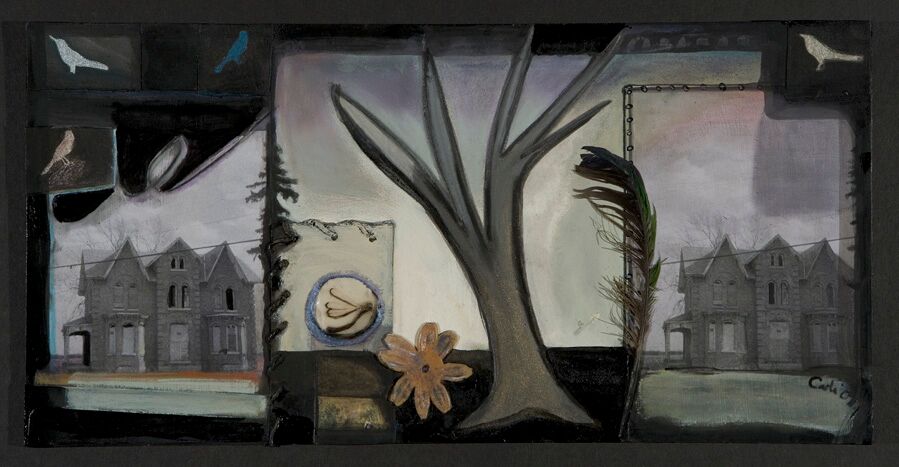
Leslie: You have a great concern over climate change, the environment and extinction. How did it begin?
Carla: My childhood was spent discovering cool insects, frogs, toads, and snakes under the towering elms in Windsor, Ontario. The elms, the frogs and most of the insects are diminishing or almost gone. To know what was, to know that sense of wonder and discovery, to be able to compare that to where we are today is almost overwhelming. Every year I would find and watch a cecropia moth hatch and fly away. The sense of wonder was deep and visceral, the memories of dark skies with stars, silence interrupted by owls, bats chasing insects by streetlights, all imprinted on me a deep sense of reverence for nature, even those bits of it in our city neighborhoods.
Leslie: Who are the people in your life who share this concern and how do you interact with them?
Carla: Most of my friends share this concern, as they are artists who generally question unbridled consumerism. Sometimes we have heart wrenching discussions about larger trends, other times we hit dive bars for the cure. I try not be a Debbie downer, though I often fail. Activism helps, and I see more artists taking that route, especially with Extinction Rebellion, a group with great aesthetics, which helps with effective and inspiring messaging.
Leslie: What characteristics do they and you share?
Carla: Happiness, playfulness, love for our planet, love of creativity, respect for integrity, truth, and a good sense of humor.
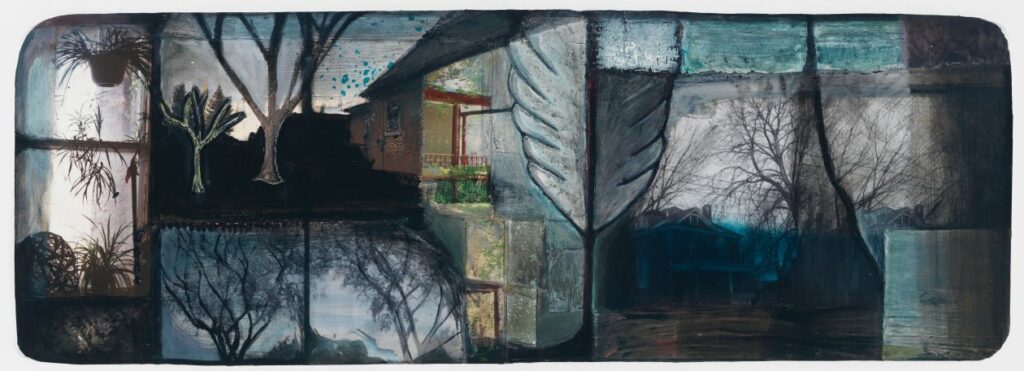
Leslie: What’s the relationship between your creative work and the environment/climate change/extinction?
Carla: Concern and alarm about our environment fuel my work, and the process of making art helps me cope and stay centered despite the increasingly alarming facts. More recently I’ve joined with Extinction Rebellion Chicago and met a great and growing group including many artists, so this provides a new avenue for shared creativity and direct action.
Leslie: Who are the people who inspire you- what’s special about them?
Carla: My family has always enjoyed that I’m an artist, encouraging me and hanging my art in their homes, so I appreciate that supportive embrace.
The artist Charles Burchfield has always been my favorite artist. His deep regard and intimate observations of nature and our interface with it, and the resultant power of his work are hugely inspiring.
The artist (and musician) Wesley Willis was a friend and roommate, his dedication to being an artist despite many obstacles was truly inspiring. Also, he was seriously fun.
Leslie: Why are you an artist?
Carla: Because I love it. Also, I sometimes think it’s almost an OCD like condition, many artists are compelled to make art whether or not there is reward. There is an inherent therapeutic quality to making art, a way of expression with a transmutational element.
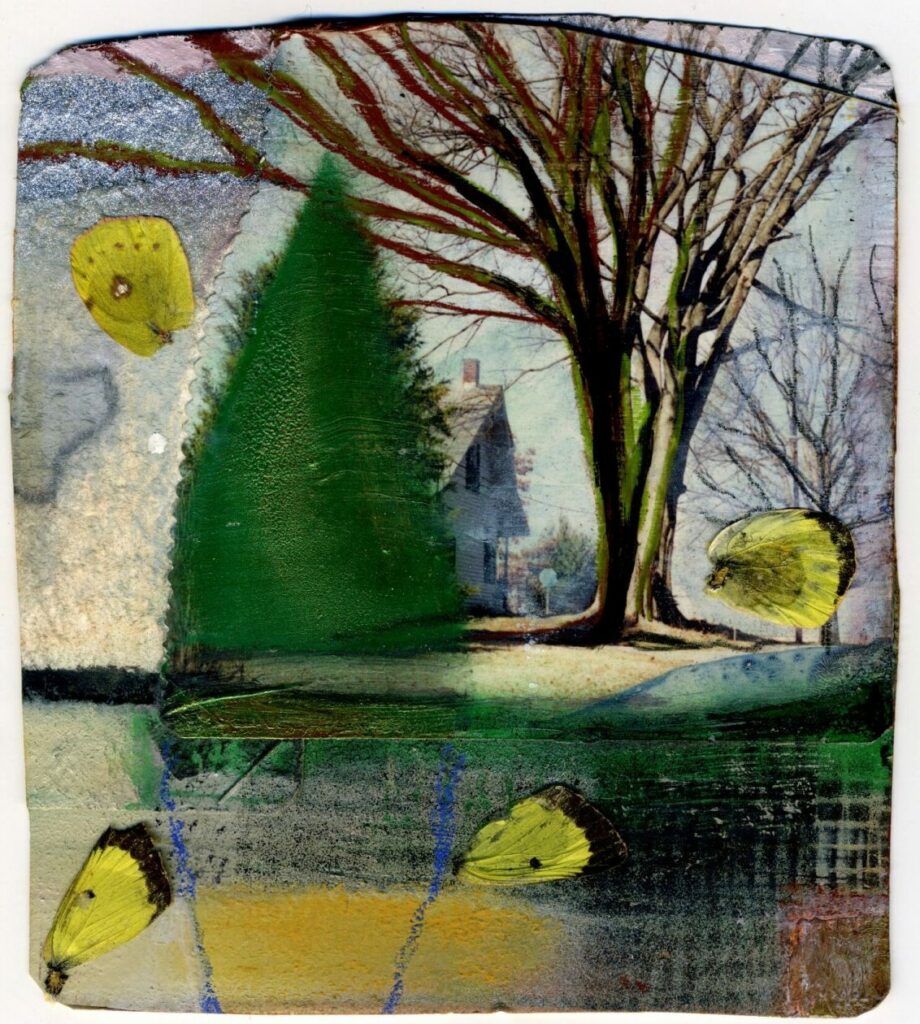
ABOUT LESLIE TATE’S BOOKS:

I interviewed poet & artist Jane Burn who won the Michael Marks Environmental Poet of the Year 2023-24 with A Thousand Miles from the Sea.

I interviewed ex-broadcaster and poet Polly Oliver about oral and visual poetry, her compositional methods, and learning the Welsh language. Polly says, “I absolutely love

I interviewed Jo Howell who says about herself: “I’ve been a professional photographic artist since I left Uni in 2009. I am a cyanotype specialist.


Poet Tracey Rhys, writer of Teaching a Bird to Sing and winner of the Poetry Archive’s video competition reviews Ways To Be Equally Human. Tracey,
| Cookie | Duration | Description |
|---|---|---|
| cookielawinfo-checkbox-analytics | 11 months | This cookie is set by GDPR Cookie Consent plugin. The cookie is used to store the user consent for the cookies in the category "Analytics". |
| cookielawinfo-checkbox-functional | 11 months | The cookie is set by GDPR cookie consent to record the user consent for the cookies in the category "Functional". |
| cookielawinfo-checkbox-necessary | 11 months | This cookie is set by GDPR Cookie Consent plugin. The cookies is used to store the user consent for the cookies in the category "Necessary". |
| cookielawinfo-checkbox-others | 11 months | This cookie is set by GDPR Cookie Consent plugin. The cookie is used to store the user consent for the cookies in the category "Other. |
| cookielawinfo-checkbox-performance | 11 months | This cookie is set by GDPR Cookie Consent plugin. The cookie is used to store the user consent for the cookies in the category "Performance". |
| viewed_cookie_policy | 11 months | The cookie is set by the GDPR Cookie Consent plugin and is used to store whether or not user has consented to the use of cookies. It does not store any personal data. |
6 responses
Lovely to meet Carla, Leslie. Her artwork is amazing and she shares a most important message. Sharing.
Thank you, Robbie. Leslie xx
Very nice interaction.
🙂 🙂 🙂
Great interview with Carla. I have always embraced nature from watching ants work to collecting ginko leaves and pasting in books as a kid.
Thank you, Alaine. It’s keeping the child-eye and the sense of wonder throughout adulthood that makes us fully human…